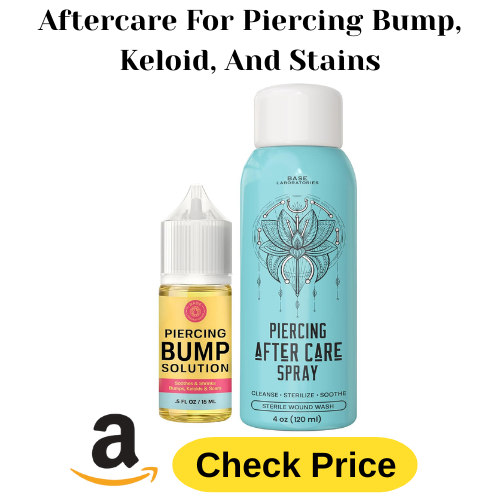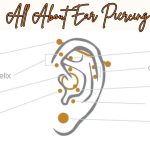A nose piercing is a form of body modification where a hole is made in the nose to insert jewelry. It’s a popular and trendy practice with various styles, including nostril, septum, high nostril, bridge, and nasallang piercings. The process involves choosing a professional piercer, sterilizing the area, marking the spot, piercing with a needle, and inserting jewelry.
Proper aftercare is crucial to prevent infection, involving cleaning with saline solution, avoiding touching, and keeping makeup away. Nose piercings have cultural significance in many parts of the world, such as in India and the Middle East, where they symbolize tradition and status. Jewelry options include studs, hoops, screws, and L-shaped pins. Overall, nose piercings are a versatile and expressive form of body art.
Piercing Aftercare – Piercing Bump & Keloid Removal Solution
Types of Nose Piercings
There are several types of nose piercings, each with its own unique style and placement:
- Nostril Piercing: This is the most common type, where the piercing is done on either side of the nostril. It can be adorned with a stud, hoop, or ring.
- Septum Piercing: This piercing is done through the thin strip of flesh at the bottom of the nose, between the nostrils. It is often decorated with a circular barbell or a ring.
- High Nostril Piercing: Placed higher up on the nostril, closer to the bridge of the nose, this piercing adds a distinctive look.
- Bridge Piercing: This piercing goes through the skin at the top of the nose, between the eyes. It is less common but very striking.
- Nasallang Piercing: This is a more complex piercing that goes through both nostrils and the septum, requiring precise placement.
Nose Piercing Process
Getting a nose piercing is relatively simple and quick:
- Choosing a Professional: Always choose a reputable piercer with experience and a clean, safe environment.
- Sterilization: The piercer will clean the area thoroughly to prevent infection.
- Marking the Spot: The exact location of the piercing will be marked.
- Piercing: Using a sterilized needle, the piercer will make a hole in the marked spot.
- Jewelry Insertion: The chosen piece of jewelry is then inserted into the new piercing.
Aftercare For Nose Piercings
Proper aftercare is crucial for a healthy nose piercing. Here are some tips:
- Cleaning: Clean the piercing twice daily with a saline solution or a piercing aftercare spray.
- Avoid Touching: Do not touch or twist the jewelry, as this can introduce bacteria and cause irritation.
- Avoid Makeup: Keep makeup and skincare products away from the piercing to prevent infection.
- Be Patient: Healing time varies, but nostril piercings typically take about 2-4 months, while septum piercings may take 6-8 weeks.
Risks And Considerations For Nose Piercings
While nose piercings are generally safe, there are some risks to consider:
- Infection: Proper cleaning and aftercare are essential to prevent infection.
- Allergic Reactions: Some people may have allergies to certain metals used in jewelry.
- Scarring: Improper care or trauma to the piercing site can cause scarring.
- Pain and Swelling: Some pain and swelling are normal, but if it persists, it’s important to consult a professional.
Cultural Significance Of Nose Piercings
Nose piercings have deep cultural roots in many parts of the world:
- India: Nose piercings are a traditional practice, especially among women, often linked to Ayurvedic beliefs and marital status.
- Middle East: Nose piercings have been practiced for centuries as a symbol of wealth and social status.
- Western Culture: In recent decades, nose piercings have become a popular fashion statement and a form of self-expression.
Choosing The Right Jewelry For Nose Piercing
There are various types of jewelry suitable for nose piercings:
- Studs: Small and subtle, often used as the initial jewelry for new piercings.
- Hoops: Circular rings that can be simple or decorative.
- Screws: Twisted studs that stay securely in place.
- L-shaped Pins: Bent at a right angle to sit comfortably in the nostril.




